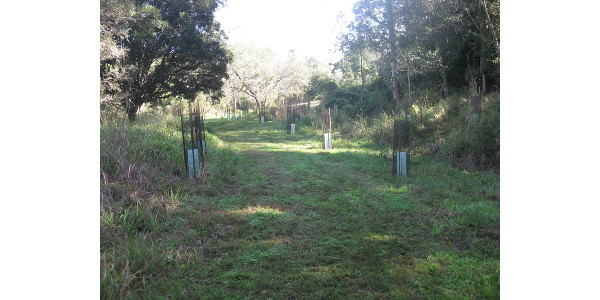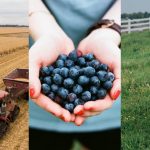Trees can experience many stresses during the winter months
MANKATO, Minn. — Trees can experience many stresses during the winter months including lack of water, sunscald, wildlife damage and winter injury to mention a few. Young trees (1 to 5 year old) should have adequate water throughout the year, till the soil freezes. Watering young conifer trees from October to soil freeze up is critical. Sunscald is caused the sun heats up the bark during a cold winter day then clouds, trees or buildings blocks the sun causing rapid freezing of the bark tissue which results in the cracking of the bark. Thin barked trees affected include: cherry, crabapple, locust, linden, maple, mountain ash and plum. Young trees should be protected with white plastic tree guards or white tree wrap.
Many mammals can damage trees in winter: mice, voles, rabbits and deer are the most common. If wildlife removes the bark completely around the tree (girdling) trunk or stem, it will kill the tree above that damaged site. Remove excess grass and vegetation from beneath and around all shrubs and trees. White plastic tree guards/tubes can be used to protect the bark and trunks of trees. Wire fencing or chicken wire can also be used. If you have voles, make sure the guards and fencing is below the ground 2-3 inches or so. Note: During heavy snow and wind periods of winter, check drifts near protected trees, if the drifts are taller than the tree tubes the rabbits will walk on the drift and chew your trees.
If deer are in your area, you will need to protect young white pine or white cedar trees by bud capping, stapling a piece of paper on the leader or terminal bud, fencing – 8 foot tall, wire cylinders – 6 foot tall or use electric fence. Young deciduous trees should be protected from rubbing on the trees from bucks. Repellents can be used but may need to be re-applied. They repel deer by taste and/or odor. There are commercial and homemade repellents. Human/pet hair, soaps, mothballs, egg and pepper mix, etc.
Conifer needles tend to dry out in cold windy weather during winter months. No water is being transferred to needles and they dry out turning brown in the spring this is called winter injury. Water trees from October till the soil freezes. Burlap barriers on the south side can be constructed. Burlap wraps can be used to wrap arborvitaes that are prone to winter injury, leaving the top open. Yews, hemlocks and arborvitaes can be planted on the north and northeast sides to protect from wind and winter sun. Brown needles on the lower branches of spruce trees may be needle cast disease. https://extension.umn.edu/natural-resources-news/browning-needles-spruce-trees
Online resources with more details, include the following:
Protecting Trees in Winter (UM)
https://extension.umn.edu/planting-and-growing-guides/protecting-trees-and-shrubs-winter
How to Manage Deer Damage on Trees and Other Plants (UM)
https://extension.umn.edu/planting-and-growing-guides/white-tailed-deer-damage
The Handbook: Prevention and Control of Wildlife Damage (University of Nebraska)
https://digitalcommons.unl.edu/icwdmhandbook/
Last modified: 11/17/2020








